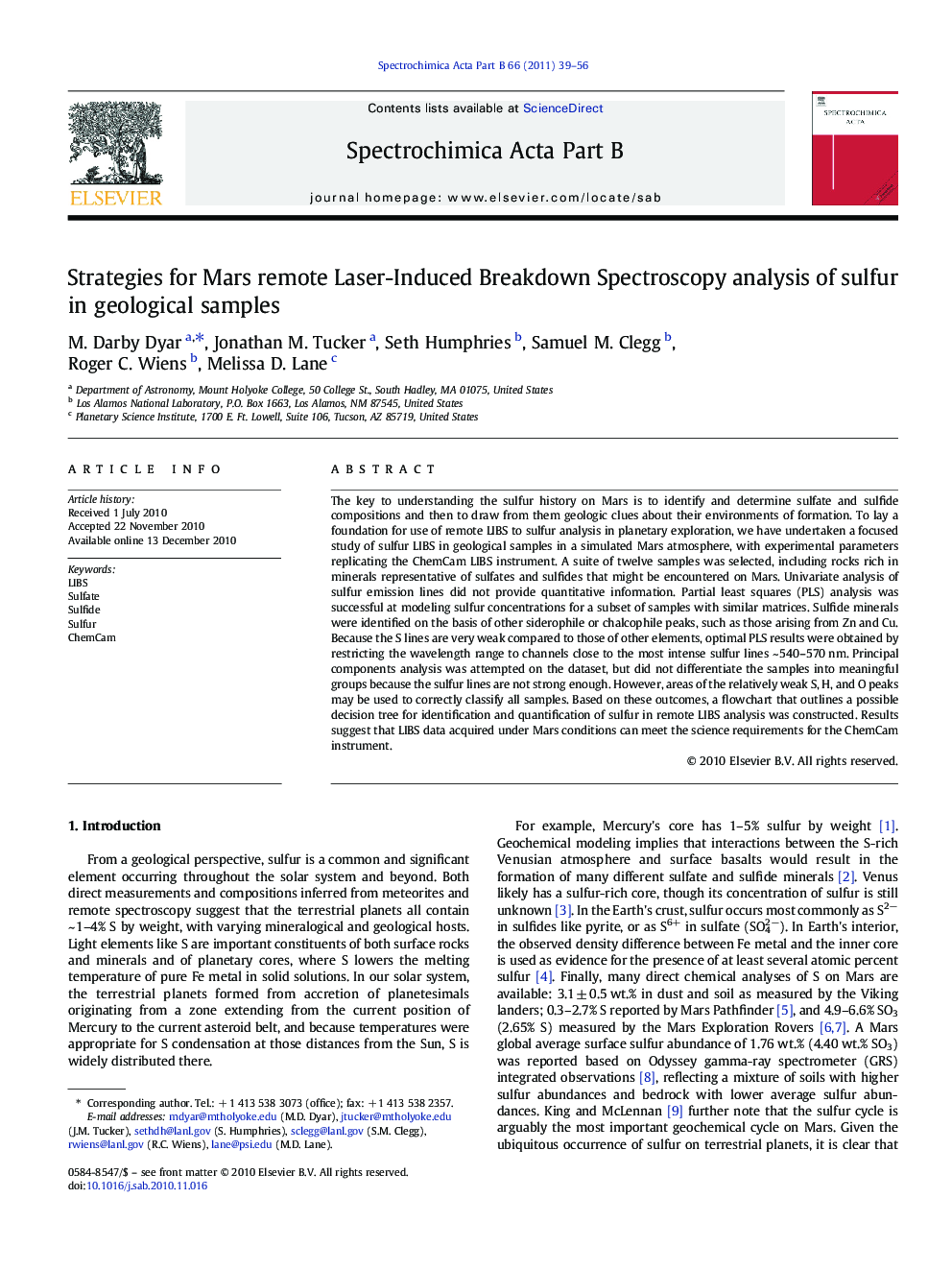| Article ID | Journal | Published Year | Pages | File Type |
|---|---|---|---|---|
| 1240077 | Spectrochimica Acta Part B: Atomic Spectroscopy | 2011 | 18 Pages |
Abstract
The key to understanding the sulfur history on Mars is to identify and determine sulfate and sulfide compositions and then to draw from them geologic clues about their environments of formation. To lay a foundation for use of remote LIBS to sulfur analysis in planetary exploration, we have undertaken a focused study of sulfur LIBS in geological samples in a simulated Mars atmosphere, with experimental parameters replicating the ChemCam LIBS instrument. A suite of twelve samples was selected, including rocks rich in minerals representative of sulfates and sulfides that might be encountered on Mars. Univariate analysis of sulfur emission lines did not provide quantitative information. Partial least squares (PLS) analysis was successful at modeling sulfur concentrations for a subset of samples with similar matrices. Sulfide minerals were identified on the basis of other siderophile or chalcophile peaks, such as those arising from Zn and Cu. Because the S lines are very weak compared to those of other elements, optimal PLS results were obtained by restricting the wavelength range to channels close to the most intense sulfur lines ~Â 540-570Â nm. Principal components analysis was attempted on the dataset, but did not differentiate the samples into meaningful groups because the sulfur lines are not strong enough. However, areas of the relatively weak S, H, and O peaks may be used to correctly classify all samples. Based on these outcomes, a flowchart that outlines a possible decision tree for identification and quantification of sulfur in remote LIBS analysis was constructed. Results suggest that LIBS data acquired under Mars conditions can meet the science requirements for the ChemCam instrument.
Related Topics
Physical Sciences and Engineering
Chemistry
Analytical Chemistry
Authors
M. Darby Dyar, Jonathan M. Tucker, Seth Humphries, Samuel M. Clegg, Roger C. Wiens, Melissa D. Lane,
